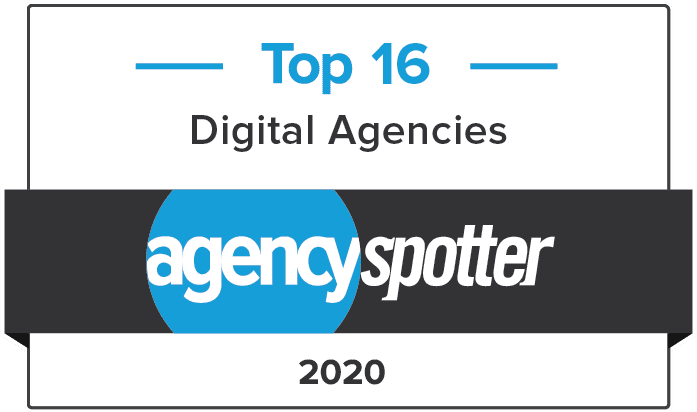
Why Email Marketing is a Go-To Strategy to Grow First Party Data this Year
In the world of data-driven marketing, some data is better than others. First-party data—the information your business collects directly from target audience members and owns—should be a top priority for every business. Here’s why.
By now, you have probably heard Google announced plans in 2020 to phase out the use of third-party cookies in its online advertising. Third-party cookies have been central to tracking online browsing behavior, and many marketers came to rely on the information from external sites to deliver highly-targeted ads
From 2023-2024, third-party cookies will be phased out and by then, marketers need to be prepared with their own data. If your own trove of data is looking less than robust right now, how will you prepare? One effective strategy for building your first-party data is email marketing.
Survey Says: Customers Prefer Email
When surveyed by Smart Insights about the ways they prefer to be contacted by brands, the top choice of consumers was email. Twice as many consumers preferred email—51 percent—over the next-highest channel, social media—with 25 percent.
Of course, customers don’t want just any old email. For them to opt into your communications and start sharing personal, first-party information about themselves you’ll need to offer something of value. Sometimes, literally. In the Smart Insights survey, a whopping 90 percent of consumers said they’d be willing to share their data in exchange for a discount.
Offering a discount doesn’t make sense for every business and it’s certainly not the only carrot to dangle. Content offers such as e-books, how-to guides or trend reports are another useful tactic. Consumers are often willing to share their email address and other personal information in exchange for compelling content to solve a problem, understand an issue, or gain insights into their specific interests.
Play the Long-Game; Plan Effectively with These Five Questions
In the initial stages of building an opt-in email marketing list, there probably won’t be a lot of detail about your contacts. Sometimes, you may only have a name and email address to start. Keep in mind building your database is a long-term strategy and takes time and patience. As you nurture the relationship with value-driven emails, you’ll see the results are worth it.
Even if your business is further along the process of developing a first-party database, you may find yourself with a large list of contacts that lacks depth. Regardless of where you are in the journey, a thoughtful email marketing program can be an important strategy for enriching your data. The ultimate goal is to cultivate enough information to make every interaction feel one-on- one, and not one-in-a-million.
To create the right data-generating roadmap to your first-party destination, ask the following five questions before beginning or revamping your email marketing program.
What are your business objectives? Take a step back. What are your business goals? What do you need to know about your target audience to achieve them?
How will you nurture your contact database? Your email marketing program needs a plan and a structure. What will the format look like? Is it a newsletter, monthly article, how-to tips or videos? Determine topics that will resonate with and add value for your audience. One way to do this is identify problems or pain points they may be facing and offer information to solve them.
How will you capture your first-party data? There are a number of ways to collect data, but it’s worth noting that every email yield useful information. How your audience interacts with each message provides clues about their needs, interests and preferences.
To take it further, businesses can integrate opportunities to capture more specific, granular details. Periodic use of short surveys to ask for information will help you understand and serve your audience better. If you have a particularly compelling piece of content or incentive, promote it in your emails and lead contacts to fill out a more detailed form before accessing the content.
To take it even further, you can set up automation for your email platform. These automations can filter contacts in your database based on actions the reader is taking. For example, sending an email about something that was abandoned in a shopping cart.
How will you analyze data? Every marketing email will generate insights. Identify which metrics are meaningful to you and track them consistently. Over time, helpful patterns and trends will emerge.
Among the metrics we regularly monitor are:
- Unique click rate. The number of individual contacts who clicked on a link in the email, compared to the total number of recipients.
- What was clicked. Which elements of the email generated clicks? Over time, you can see what interested your contacts, or certain segments of your contacts.
- Where clicks were located. Did more contacts click links higher or lower in the message? Clicks in the bottom half of your message show contacts are reading further into your content.
- Time spent on the email or page. How long did a contact spend reading your content? This helps you understand how engaging your communication is.
- Stopping points. Are contacts abandoning the message before making it halfway down the page? If this is a consistent pattern, your content may be too long.
How will your program grow and evolve? As you continue collecting data, your email marketing can become more sophisticated and tailored. Best practices include segmenting your contact list and developing email workflows uniquely suited to audience interests.
Building first-party data may be an end goal of an email marketing program, but the journey to get there is just as valuable. It will be full of lessons that ultimately improve your ability to build your brand trust, loyalty, and credibility each step of the way. Using email marketing as a way to learn about your audience ensures your value grows with every send.
Tony Wagner is an email automation strategist and Calan Smidt is a data systems strategist within Strategic America’s Data, Research & Insights team. Tony organizes and executes high-performing email marketing programs driven by data and insights. Calan oversees CRM functions and makes sure the first-party data is clean, accurate and execution ready for various marketing efforts.



